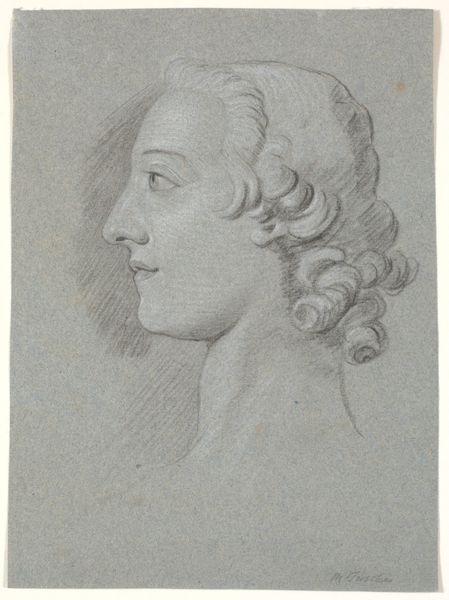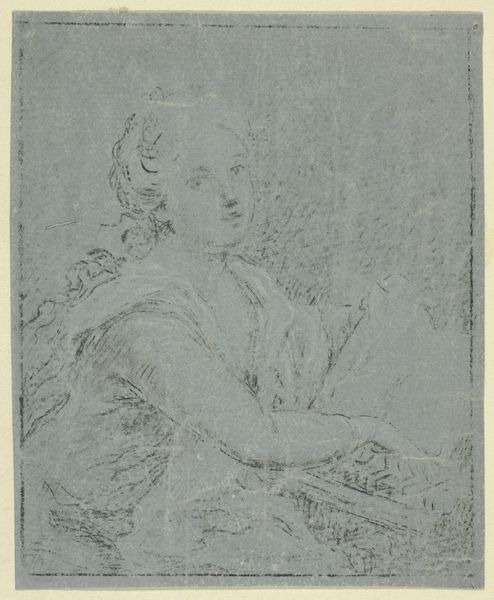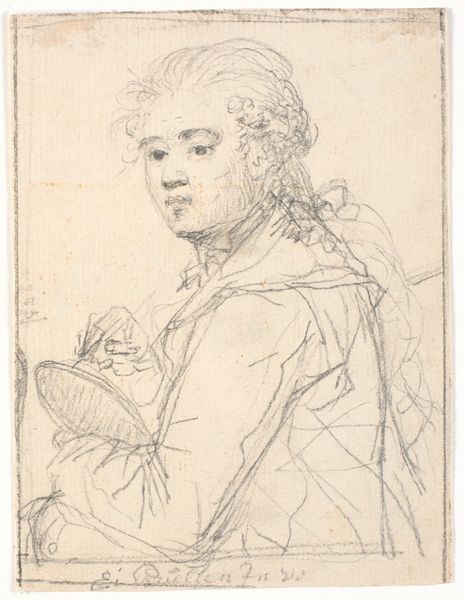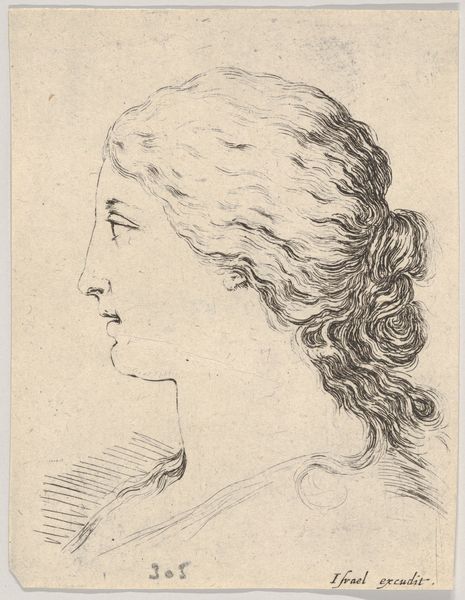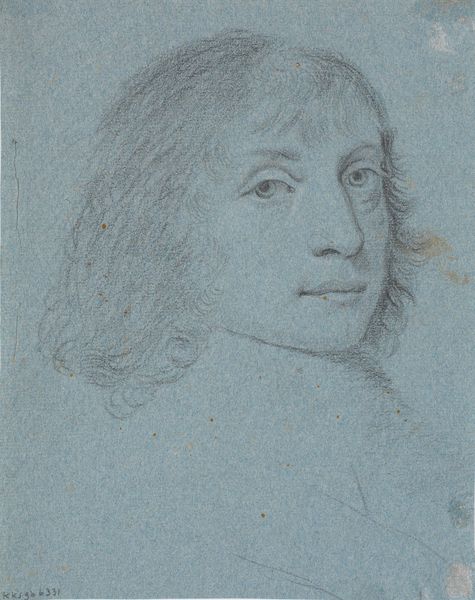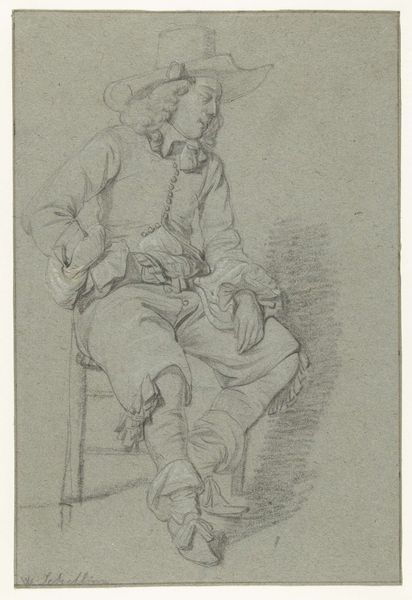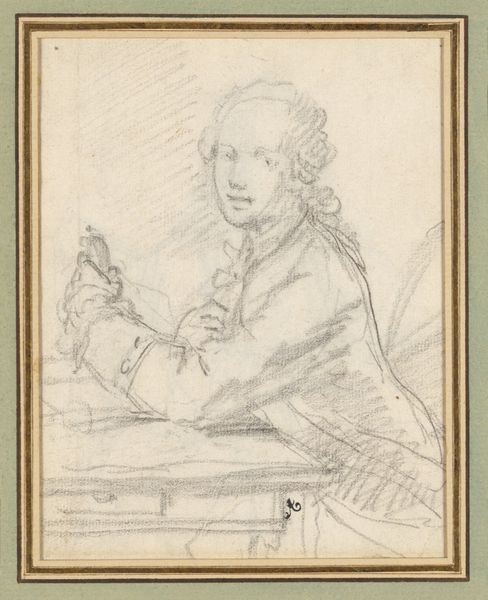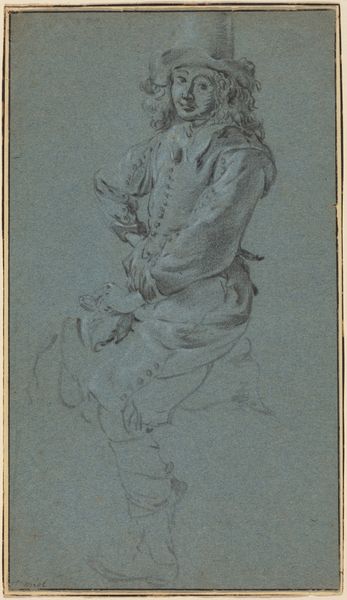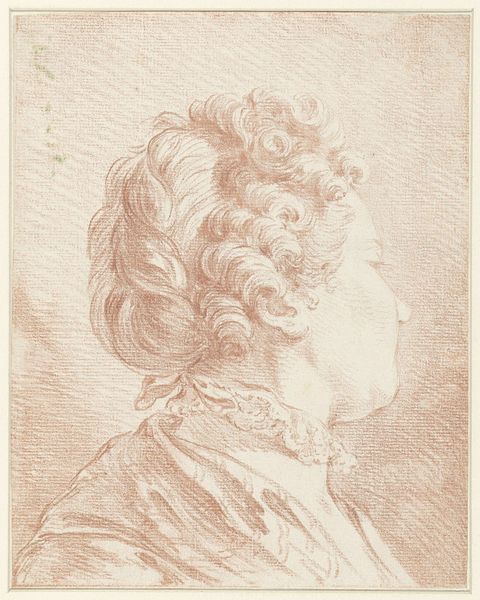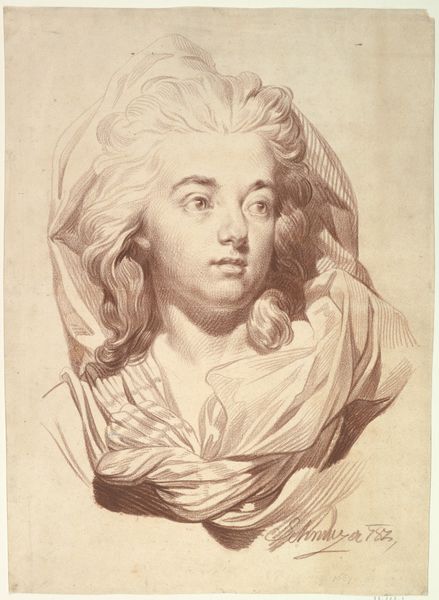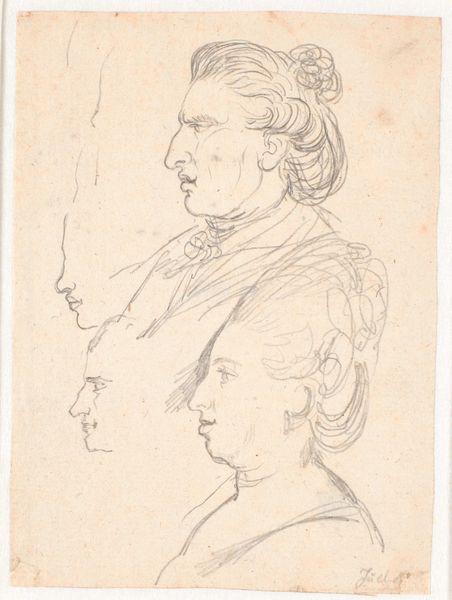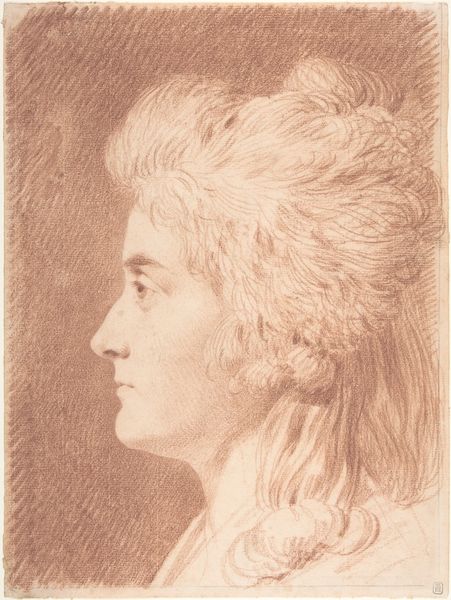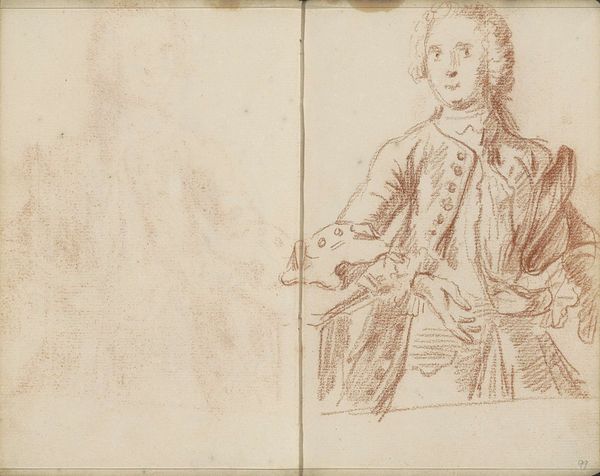
Studieblad med tre hoveder. Studie til "San Giuseppe Calasanz' mirakel" 1738 - 1751
0:00
0:00
drawing, pencil
#
portrait
#
drawing
#
baroque
#
charcoal drawing
#
pencil drawing
#
pencil
#
portrait drawing
Dimensions: 376 mm (height) x 274 mm (width) (bladmaal)
Curator: Look at this lovely study – "Studieblad med tre hoveder. Studie til "San Giuseppe Calasanz' mirakel"" by Marcus Tuscher, dating from between 1738 and 1751. It’s a preparatory drawing in pencil, held here at the SMK. Editor: It's dreamy, isn't it? That soft blue paper and the way the figures almost float... a bit melancholy too. Gives the sense of a memory fading at the edges. Curator: A keen observation! As a study for a larger work, it certainly has a fragmented quality, like captured thoughts. Tuscher was clearly working through different possible faces for the figures in his final painting. Editor: The fellow at the top…there’s a wistful gaze, and he seems miles away. Wonder what part he ended up playing in the “Miracle?” The kid at the bottom looks like he's pondering life's mysteries already. Curator: The Baroque was a period of great emotional and dramatic expression. The upward gazes may be linked to their spiritual contemplation, suggesting that they've received some sort of divine vision or knowledge. Editor: Baroque often walks the tightrope of theatricality...and the psychological depth. I mean, look at how the light plays with their hair. Even the material conveys mood and feeling. And even just with pencils, how the subtle shading breathes life into each character. Curator: Definitely! The figures also strike me as somewhat stylized: The noses, for instance, are quite classical, recalling those of Greek sculptures and suggesting perhaps, virtue and authority. The baroque artists had a very interesting preoccupation with classical aesthetic concepts. Editor: Hmmm… virtue and authority… maybe! Or maybe just an obsession with long, aristocratic noses! But joking aside, these faces do stick with you. And for me there’s almost this recognition, of emotions and inner dialogues we've all had at one point or another. Curator: Exactly. And that’s what keeps us drawn to them all this time after they were made. What began as a simple study turned into a mirror of human expression that keeps revealing facets of the collective consciousness. Editor: Yeah. Proof that art, even just a study, can outgrow its practical purpose to take on something bigger. It ends up living in the collective unconscious... or our art history audio guides. Curator: That's one way of looking at it, absolutely! A reminder that symbols and emotion persist.
Comments
No comments
Be the first to comment and join the conversation on the ultimate creative platform.
